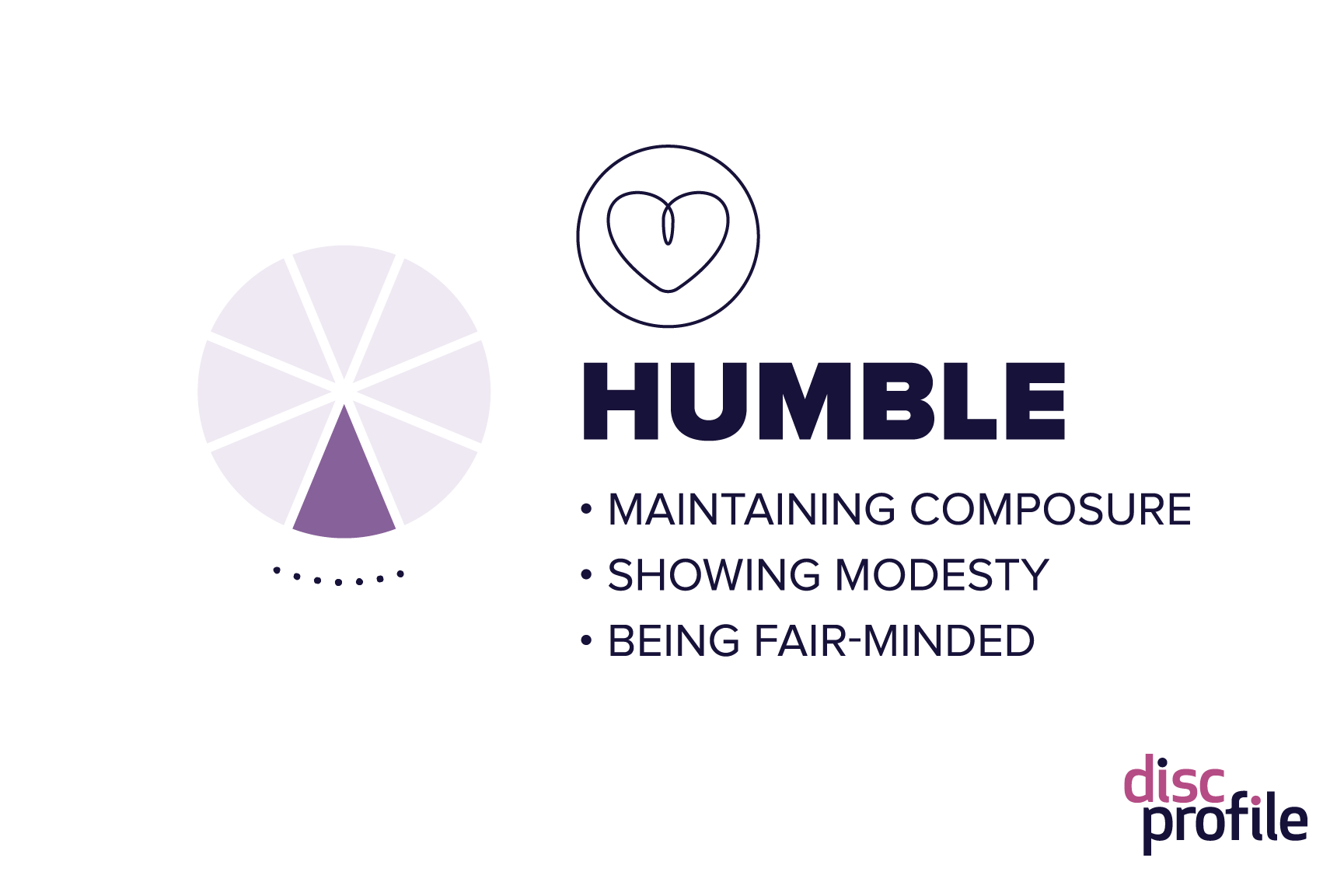Humble Leaders: DiSC SC or CS Style Leadership
Key Takeaways
- Humble leaders align with the SC or CS style in the Everything DiSC® model of leadership.
- People with a humble leadership style are often self-controlled, fair-minded, and consistent when leading.
- Every type of leader can learn from humble leaders how to remain composed, listen to others, and appreciate different perspectives.
Humility in leadership, or servant leadership, has been a popular topic in the past few years. Research reports and experts say humility is a key leadership attribute and fosters innovation.
Leaders tend to use one of eight dimensions of leadership primarily. Humble leadership is one of these eight types in the Everything DiSC leadership model and reflects SC or CS styles on the DiSC scale.
Jim Collins, American researcher, author, speaker, and consultant
The humble leadership style
Humble leaders tend to be a bit on the cautious side, self-controlled, and soft-spoken. They are fair-minded, practical, and often able to discern what systems and structures would meet other people’s needs. They model follow-through and diligence.
Leaders with naturally humble personalities are able to maintain their composure. They keep their personal egos in check more easily than leaders of other types.
If you’re a humble leader, you might be motivated by a desire to be reliable and to avoid trouble. These two traits might make you prone to inaction since you don’t want to make mistakes that will affect others. You have a low level of self-serving ambition and the ability to keep things in perspective.

Strengths of humble leaders:
- They’re often able to head off potential problems with careful planning.
- They provide others with the tools necessary to do their work.
- They’re able to create a stable environment.
- They maintain their composure, even under stress.
- They’re conscientious about reaching closure on projects and initiatives.
- They model a steady work ethic.
- They expect themselves and others to deliver accurate outcomes.
Goals of humble leaders:
- Stability
- Reliable outcomes
- Calm environment
Areas for improvement:
- Being decisive
- Showing urgency
- Initiating change
- Speaking up
Source: The 8 Dimensions of Leadership
What can we learn from humble leaders?
1. People need leaders to stay calm under fire
The last thing you need to see during challenging times is your leader freaking out. People can lose faith in someone who is letting their emotions control them.
Humble leaders know how to keep things in perspective—to take time to breathe and make thoughtful decisions. They can take a step back from a problem to look at the bigger picture. Humble leaders tend to look around for a better perspective and can see things from other viewpoints. They give themselves the space to make better decisions based on more than an emotional reaction.
Faye Wattleton, president of the Center for the Advancement of Women
2. You need other people more than you think
Is your communication only one-directional? Humble leaders know that they must listen to those around them, even those in much lower-level positions.
Great leaders take the time to elicit communication from others. They empower others by showing that they value them and their opinions. In this way, humble leaders learn valuable information that wouldn’t surface otherwise. Someone with a humble leadership style is probably not the last to know when trouble is brewing.
Kathy Heasley, founder and president, Heasley & Partners
3. Other people have needs that differ from your own
One of the major lessons from DiSC is that the golden rule doesn’t always work because we aren’t all wired the same. What motivates me, my fears, and my priorities are likely not the same as yours.
Humble leaders don’t try to drag their followers along on their ride. They know that to get the best from their people, they must pay attention to everyone’s needs. They check on the emotional pulse of the people they lead. They concern themselves with employee engagement levels.
When using the humble dimension of leadership, leaders strive to appreciate different styles and perspectives. They work hard to balance the needs of the people under them. They know that when people seem to be agreeing, they might still have reservations.
Growth opportunities for DiSC® SC- and CS-style leaders
Taking risks
The desire to appear reliable and have everything “just so” can hinder a humble leader in times of rapid change. The humble leader has to expend extra effort to take risks; it’s more natural for them to try to avoid trouble.
Breaking rules
Humble leaders sometimes respect rules and traditions too much. They need to learn how to stretch their boundaries and be more adventurous in looking for new opportunities.
Showing passion
Gaining input from others and focusing on the needs of the team are important. But it’s also important for a leader to show passion and confidence. Humble leaders tend toward emotional restraint. This means they can have a hard time rallying people through their own energy and enthusiasm.
Self-promotion
Humble leaders have a low need for ego gratification and a desire to be inconspicuous. Unfortunately, this can hide their leadership skills from those looking for more charisma and self-promotion.
Leadership development using DiSC
Everything DiSC Work of Leaders® provides tools for every style of leader to be more effective. The assessment reveals your DiSC leadership style and gives personalized guidance in developing leadership skills.
Related reading
People need leaders to stay calm under fire
- How to Lead Under Pressure and Remain Calm, Lolly Daskal
- 8 Practical Ways to Succeed Under Pressure, Inc
- How to Not Take Things So Personally, Coaching for Leaders
You need other people more than you think
- Are You Really Listening?, Harvard Business Review
- Retired 4-star U.S. Army general: The best leaders listen to—and learn from—younger, less experienced people, CNBC
- The Path Towards Trusting Relationships, with Edgar Schein and Peter Schein, Coaching for Leaders podcast
- TED Talk: “5 Ways to Listen Better,” Julian Treasure
Other people have needs that differ from your own
- Maslow’s Hierarchy of Needs: An In-Depth Guide for Leaders and Managers, TSW Training
- Leaders Don’t Have to Choose Between Compassion and Performance, Harvard Business Review
- When Leaders Need To Be Followers, Forbes
Posted 10/04/2018, Last Updated 11/11/2022







